Have you ever seen a plant that looks like it came straight out of a storybook? If not, let me introduce you to the Desert Rose, also known as Adenium obesum. With its bold, sculptural trunk and vibrant, trumpet-shaped flowers, it’s not just a plant – it’s a living piece of art.
Native to arid regions of Africa and the Middle East, the Desert Rose thrives in intense heat, direct sunlight, and even moderate neglect. Yep, you heard that right: this plant is not only stunning but also surprisingly easy to care for if you understand its needs.
With its chubby, sculpted base, glossy green leaves, and bursts of bright, tropical blooms, this plant is like the diva of the succulent world, showy but surprisingly easy to live with. And the best part? Even beginners can succeed with it, as long as they follow a few simple steps.
Native to dry, sun-drenched landscapes in Africa and the Arabian Peninsula, the Desert Rose has adapted to thrive in tough conditions, making it an ideal pick for gardeners who love bold beauty without the stress.
So whether you’re dreaming of a container showpiece for your patio or just want to add a splash of drama to your sunny windowsill, I’m here to walk you through every step, like a friend who’s already made the mistakes and learned all the tricks. Let’s get growing!
What is a Desert Rose Plant?
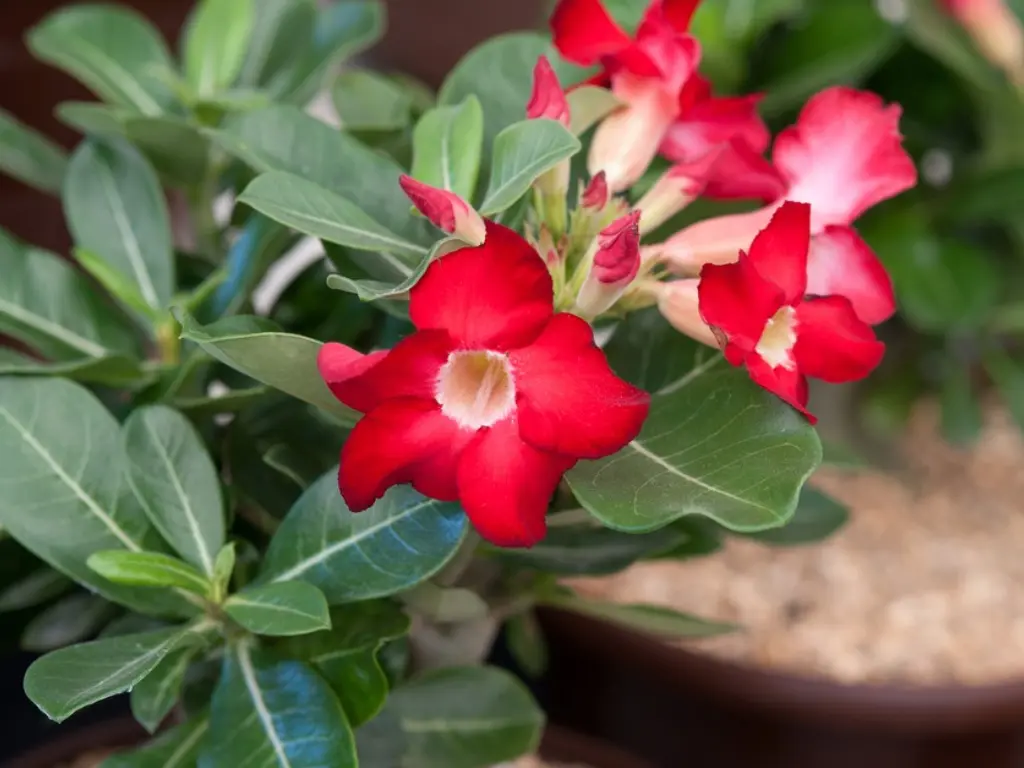
The Desert Rose (Adenium obesum) is a one-of-a-kind succulent that blurs the line between tree, bonsai, and flowering houseplant. It boasts a thickened, water-storing trunk (called a caudex) that gives it a sculptural look, almost like nature’s take on modern art.
And then there are the flowers: vibrant, trumpet-shaped blossoms in shades of hot pink, red, white, and even bicolor – often blooming in dazzling clusters. When in full bloom, the Desert Rose looks like it’s wearing a crown of confetti.
But don’t let its exotic appearance fool you – this beauty is tough as nails, especially when given the dry, sunny conditions it craves. It’s the perfect plant for gardeners who want maximum visual impact with minimum maintenance.
Planting Desert Rose
Best Time to Plant Desert Rose
Spring and early summer are ideal times to plant. The warmth and light encourage strong root development and prepare the plant for blooming.
Choosing the Right Location
Light is the Desert Rose’s best friend. Choose a sun-drenched location with at least 6–8 hours of direct sunlight per day. Outdoors, that might mean a sunny deck, patio, or raised bed. Indoors, a south or west-facing window is best.
It’s also helpful to find a spot with good air circulation to prevent fungus and keep pests at bay.
Bonus tip: Desert Rose is highly phototropic – it leans toward the light. To encourage even, symmetrical growth, rotate the pot every week or two.
Soil Preparation
Good drainage is everything. Use a cactus or succulent mix, or make your own by mixing potting soil with sand and perlite. The goal? Fast-draining soil that mimics its native desert environment.
How to Plant Desert Rose
Here’s a quick step-by-step:
-
Choose your spot or container. Make sure there’s excellent drainage.
-
Position the plant so that the caudex is partly above soil level – this not only prevents rot but also showcases the plant’s coolest feature.
-
Backfill with soil, gently patting it down around the roots.
-
Water lightly after planting. Don’t soak it – just enough to help settle the soil.
If planting in the ground in warm zones, consider a slightly raised bed to ensure no water puddles around the roots.
Container Planting Tips
Short on space or dealing with frosty winters? No problem! Desert Rose thrives in containers. Use a well-draining pot with a drainage hole, and opt for a size that gives the roots room but not too much extra space.
Bonus: You can bring your Desert Rose indoors when the weather gets chilly, which helps it live long and bloom strong.
Caring for Desert Rose
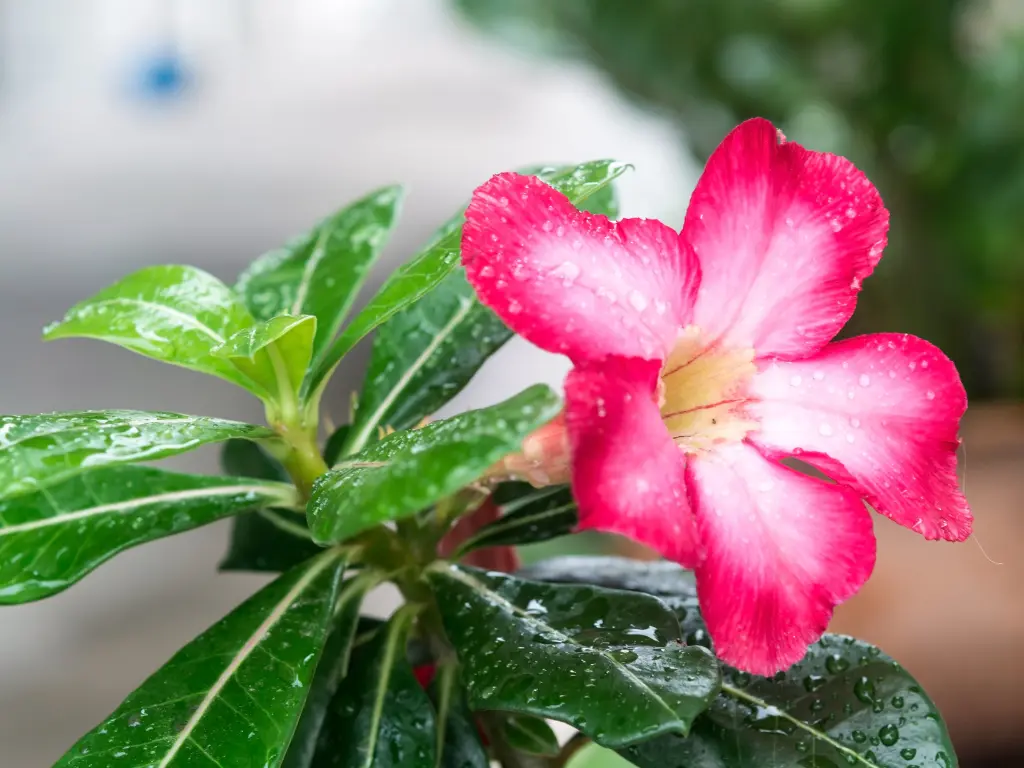
Watering
Think of your Desert Rose like a camel – it stores water and doesn’t want to sit in soggy soil. Water only when the top 1-2 inches of soil feel dry. During the growing season (spring–summer), water deeply but infrequently. In fall and winter? Cut back drastically.
Pro tip: Less is more. Overwatering is the #1 killer of Desert Roses.
Fertilizing
Feed your plant monthly during active growth with a balanced liquid fertilizer (like 10-10-10), diluted to half strength. Avoid feeding in winter when the plant goes semi-dormant.
If you want to boost blooms, switch to a high-phosphorus fertilizer during the flowering months.
Pruning and Shaping
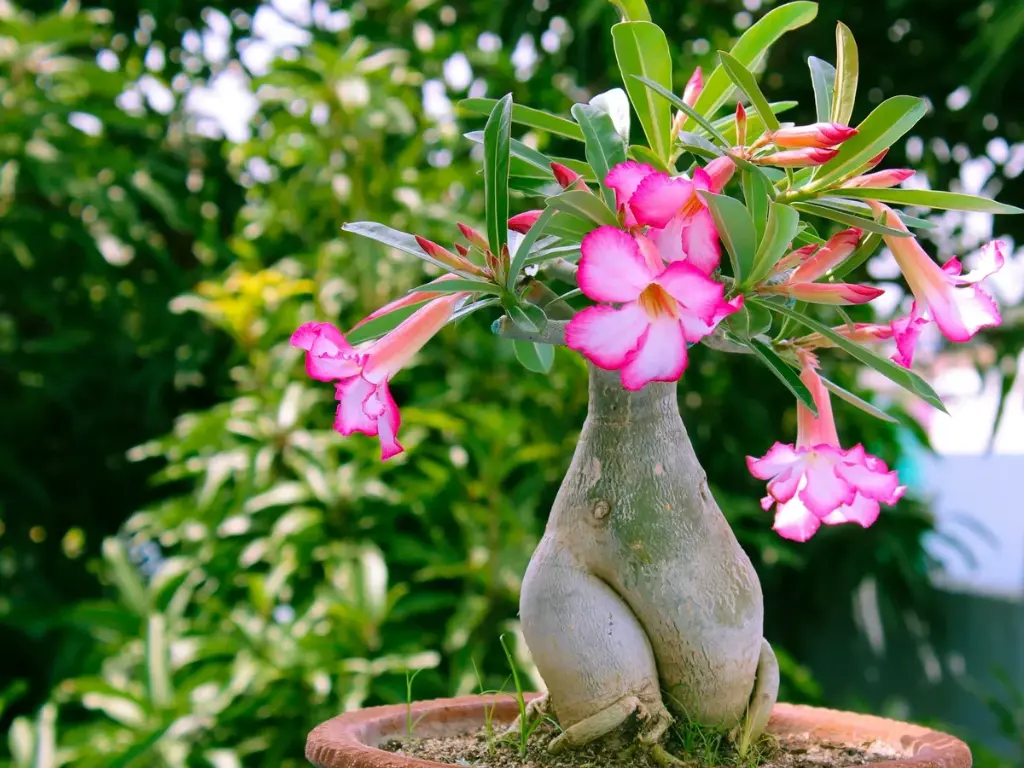
Pruning isn’t just for looks – it also encourages branching and more flowers. Trim leggy growth in late winter or early spring before new growth begins. Want that bonsai look? Pinch new growth regularly to shape your plant into a miniature tree.
After flowering, you can also deadhead (remove spent blooms) to tidy up the plant and prevent seed formation.
Seasonal Plant Care Tips
In colder zones, treat Desert Rose like a tropical – bring it indoors when temperatures drop below 50°F (10°C). Reduce watering in winter and give it as much light as possible indoors.
If growing outdoors in USDA zones 10-11, your plant can stay out year-round with a thick mulch layer and protection from heavy rains.
Potting and Repotting
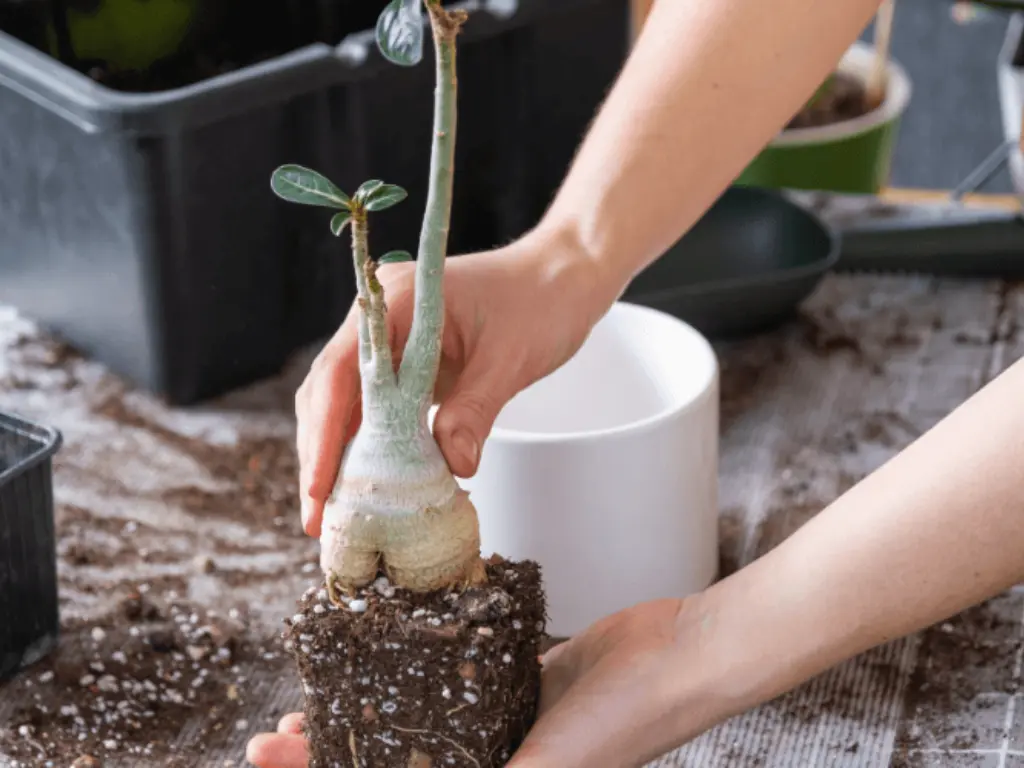
Repotting every 2–3 years helps keep your plant healthy and gives you a chance to refresh the soil.
-
Use a slightly larger pot with fresh mix.
-
Gently tease out circling roots.
-
Avoid burying the caudex — raise it slightly if you want that “bonsai trunk” look.
-
Water sparingly for the first week after repotting to allow roots to adjust.
Show off the caudex when repotting — it’s the plant’s signature feature!
How to Propagate Desert Rose
There are two main methods: seeds and cuttings.
-
Seeds: Fresh seeds germinate quickly in warm, moist soil. Start them indoors in trays with a cactus mix and keep them humid until sprouting.
-
Cuttings: Take a stem cutting, let it callus for a few days, then plant it in dry, sandy soil. Cuttings grow faster but often lack the thick caudex of seed-grown plants.
How to Get Your Desert Rose to Bloom
When to Expect Blooms
With the right care, Desert Rose blooms from late spring through fall. Some even bloom year-round in tropical climates.
How to Encourage Blooming
-
Ensure at least 6 hours of sunlight daily.
-
Use a phosphorus-rich fertilizer during the bloom cycle.
-
Avoid overwatering — slight “drought stress” can actually trigger flowering.
-
Don’t let too many stems grow too tall — pruning encourages more flower buds.
Troubleshooting
Common Problems
-
Yellow leaves? Could be overwatering or lack of sunlight.
-
No blooms? Check light exposure and fertilizer balance.
-
Wrinkled caudex? That’s a sign of underwatering.
Pests and Diseases
-
Spider mites & aphids: Look for webbing or sticky residue on leaves. Use neem oil or insecticidal soap.
-
Root rot: If the base gets soft or mushy, cut back watering and repot in dry soil immediately.
Useful Tips for Growers
-
Rotate your plant weekly for even growth.
-
Clean your tools before pruning to prevent infections.
-
Let cuttings dry fully before planting to avoid rot.
-
Don’t bury the caudex — keep it exposed for better air circulation and aesthetics.
Frequently Asked Questions (FAQs)
Can I grow it indoors?
Yes! Desert Rose can thrive indoors as long as it gets plenty of bright, direct light; a south-facing window is ideal. Be mindful not to overwater, especially during winter when the plant enters dormancy. If light is limited, consider using a grow light to keep your plant healthy and encourage blooms.
Is it poisonous?
Yes, all parts of the plant, especially the sap, are toxic if ingested by pets or humans. The sap contains compounds that can cause stomach upset or more serious reactions, so it’s best to handle with gloves and keep it out of reach of curious pets and small children. If you get sap on your skin, wash the area with soap and water immediately.
Can I shape it like a bonsai?
Absolutely. With thoughtful pruning and regular care, Desert Rose is a favorite among bonsai enthusiasts thanks to its thick trunk and artistic branching. You can train it into a low, twisted form over time, and even expose the caudex further to enhance its sculptural look.
How long does it live?
With the right conditions and a little love, Desert Rose can live for 20 years or more. Mature plants often bloom multiple times a year, and their unique shapes become more dramatic and beautiful as they age, making them true legacy plants for patient gardeners.
Final Thought
Caring for Desert Rose isn’t just about growing a plant, it’s about growing a living sculpture. With its twisted trunk, bright flowers, and bold personality, it brings a touch of the desert into your home or garden.
Once you get the hang of its rhythm, sunny spot, dry soil, and gentle care, your Desert Rose will reward you with season after season of show-stopping blooms. It’s a low-maintenance plant with high impact — what’s not to love?
Check out our guide on “Care Tips“ for more hands-on tips!
You may like:

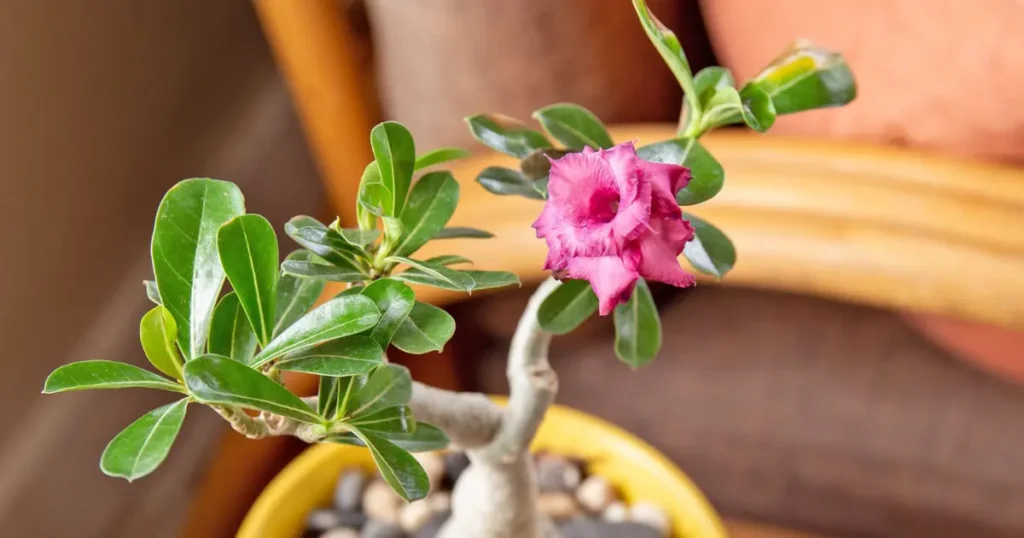
7 Vegetables to Plant in December for a Bountiful Winter Harvest
Winter gardening is a challenge many new gardeners shy away from. But if you’re among [...]
Dec
9 Common Christmas Cactus Problems and How to Fix Them
Have you ever walked past your Christmas cactus and wondered why it suddenly looks sad? [...]
Nov
Swedish Ivy Care: How to Grow a Healthy, Thriving Plant
Have you ever looked at your Swedish Ivy and wondered why the leaves are turning [...]
Nov
Avoid These 10 Garlic Planting Mistakes for Bigger, Healthier Bulbs
Growing garlic at home is one of the most satisfying things a gardener can do [...]
Nov
How to Prevent Christmas Cactus Bud Drop: Tips for a Healthy Bloom
Have you ever noticed your beautiful Christmas cactus (Schlumbergera) starting to lose its buds just [...]
Nov
Discover 7 Stunning Types of Night-Blooming Cereus
Have you ever waited for a flower that only opens at night and then disappears [...]
Nov